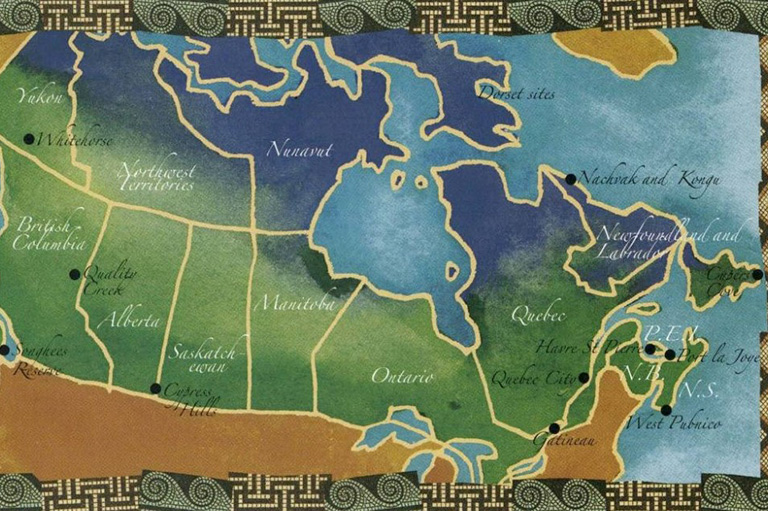Whitehorse, Yukon: Frozen in time

In 2003, Cody Joe, a member of the Champagne and Aishihik First Nations found lying on rocks in the ice fields of southwestern Yukon near Whitehorse two water-logged fragments of hide sprouting a growth of moss.
Thinking the pieces were fragments of a leather bag or drawstring pouch, Joe, a field assistant with the Yukon Ice Patch Project who was in the area west of Whitehorse to search for artifacts, brought them to the Yukon government archaeology and conservation laboratory in Whitehorse.
Valery Monahan, a conservator with the Yukon government, painstakingly cleaned the fragments and pieced them together. As the artifact took shape, Monahan realized it was not a bag after all, but an even rarer archaeological find — a moccasin with an ankle tie.
Radiocarbon dating showed the footwear to be approximately 1,400 years old, making it the oldest known moccasin in Canada. Monahan spent approximately 240 hours restoring it over the past two and a half years.
She believes the moccasin may have been used for lightweight summer footwear, as it was found in a forested area traditionally used for summer caribou hunting.
Previous Canadian finds of ancient hide clothing have been found mainly in tundra regions, left by ancestors of today’s Inuit. A hunter belonging to the early Athapaskan people is believed to have dropped or discarded the moccasin.
It is only one of numerous artifacts being exposed by the melting ice patches in the Yukon.
The Yukon Ice Patch Project is a joint research effort of the Yukon government and six First Nations communities.
The project was born following a sighting of caribou dung deposits in the area in 1997 — in a region where caribou had not roamed for at least 70 years. The dating of a core sampling of the dung showed it to be 2,000 years old.
Greg Hare, site assessment archaeologist for the Yukon government, says the sites they have visited since the project’s inception in 1997 have yielded 185 artifacts, including numerous hunting tools, bones and mummified birds and mammals.
Artifacts beneath ice patches are doubly valuable, Hare says, because a lot can be determined from the context in which they’re found.
Unlike glaciers that are constantly shifting, the ice patches don’t move, so artifacts found there are most likely very close to where they were originally dropped or discarded.
The oldest artifact found, a section of a hunting dart, is 9,000 years old.
Updated August 2019: Since this article was written, the Yukon government has updated its website and information may be more difficult to find. Here is a link to the Yukon Ice Patch Research and Site Inventory Project. There was also a beautifully-illustrated pdf about the project, however, it is currently only available in French.
We hope you’ll help us continue to share fascinating stories about Canada’s past by making a donation to Canada’s History Society today.
We highlight our nation’s diverse past by telling stories that illuminate the people, places, and events that unite us as Canadians, and by making those stories accessible to everyone through our free online content.
We are a registered charity that depends on contributions from readers like you to share inspiring and informative stories with students and citizens of all ages — award-winning stories written by Canada’s top historians, authors, journalists, and history enthusiasts.
Any amount helps, or better yet, start a monthly donation today. Your support makes all the difference. Thank you!
Themes associated with this article
Advertisement













